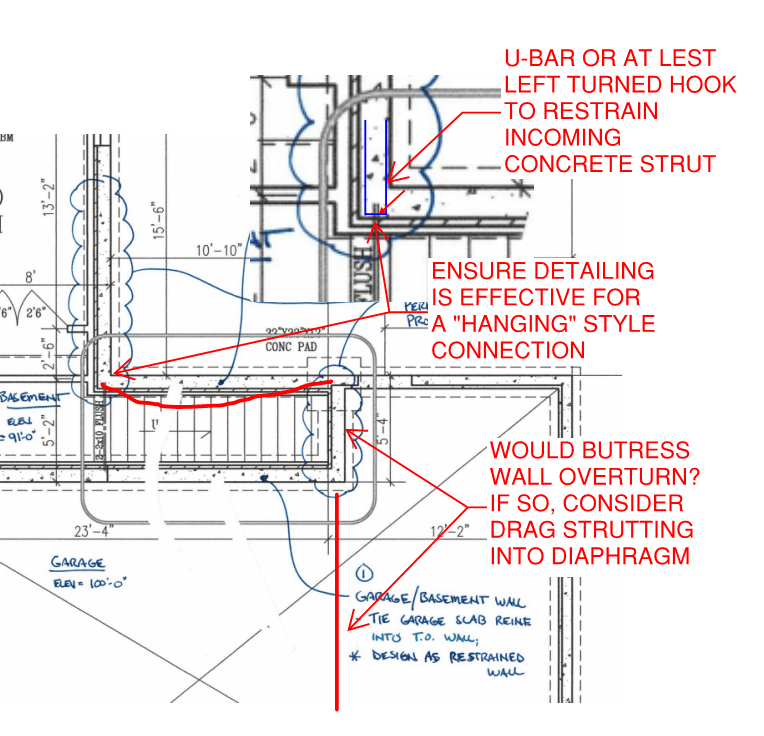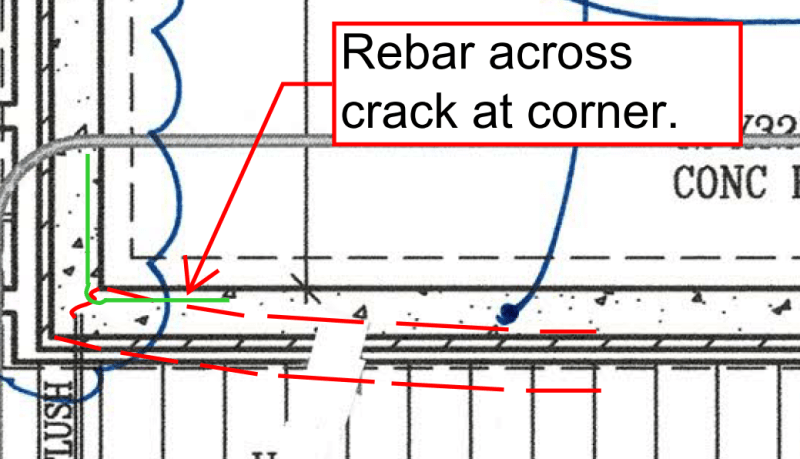TroyD
Structural
- Jan 28, 2011
- 98
I'm assisting a home builder with a permit issue. The attached drawing shows two basement foundation walls that are of concern due to the stairwell - where there are no floor joists to provide support at the top of wall. (I'm using RetainPro software to design the walls). The garage wall can easily be designed with the garage slab reinforcing tied in to the foundation wall via bent dowels to provide lateral restraint at the top. The outer wall needs to be designed as a cantilevered wall, with increased footing width, stem reinforcing, etc. to resist overturning. But I'm curious what support the perpendicular walls (shown bubbled) can provide? Obviously the mid-point between those two perpendicular walls (10'-10" span) will least benefit from those walls. They act as a buttress, right?
I'm familiar with rectangular concrete tank design and the moment coefficient distribution thru the wall height/length. Has anyone applied this design method for situations like this? I'm thinking I might be able to design the mid-point of that wall as a full cantilever wall, and taper the footing width down towards the ends. Any thoughts?
I'm familiar with rectangular concrete tank design and the moment coefficient distribution thru the wall height/length. Has anyone applied this design method for situations like this? I'm thinking I might be able to design the mid-point of that wall as a full cantilever wall, and taper the footing width down towards the ends. Any thoughts?


